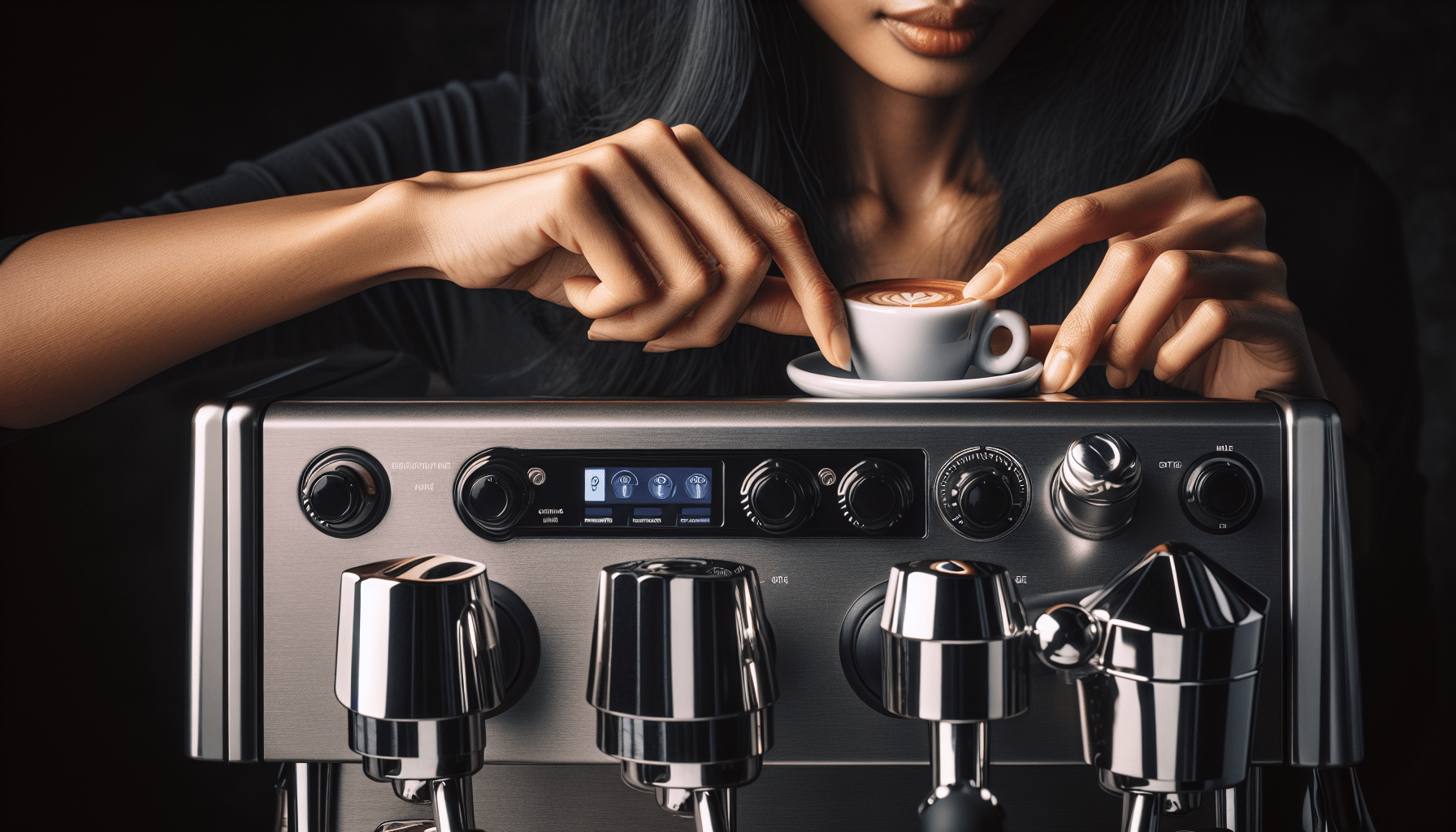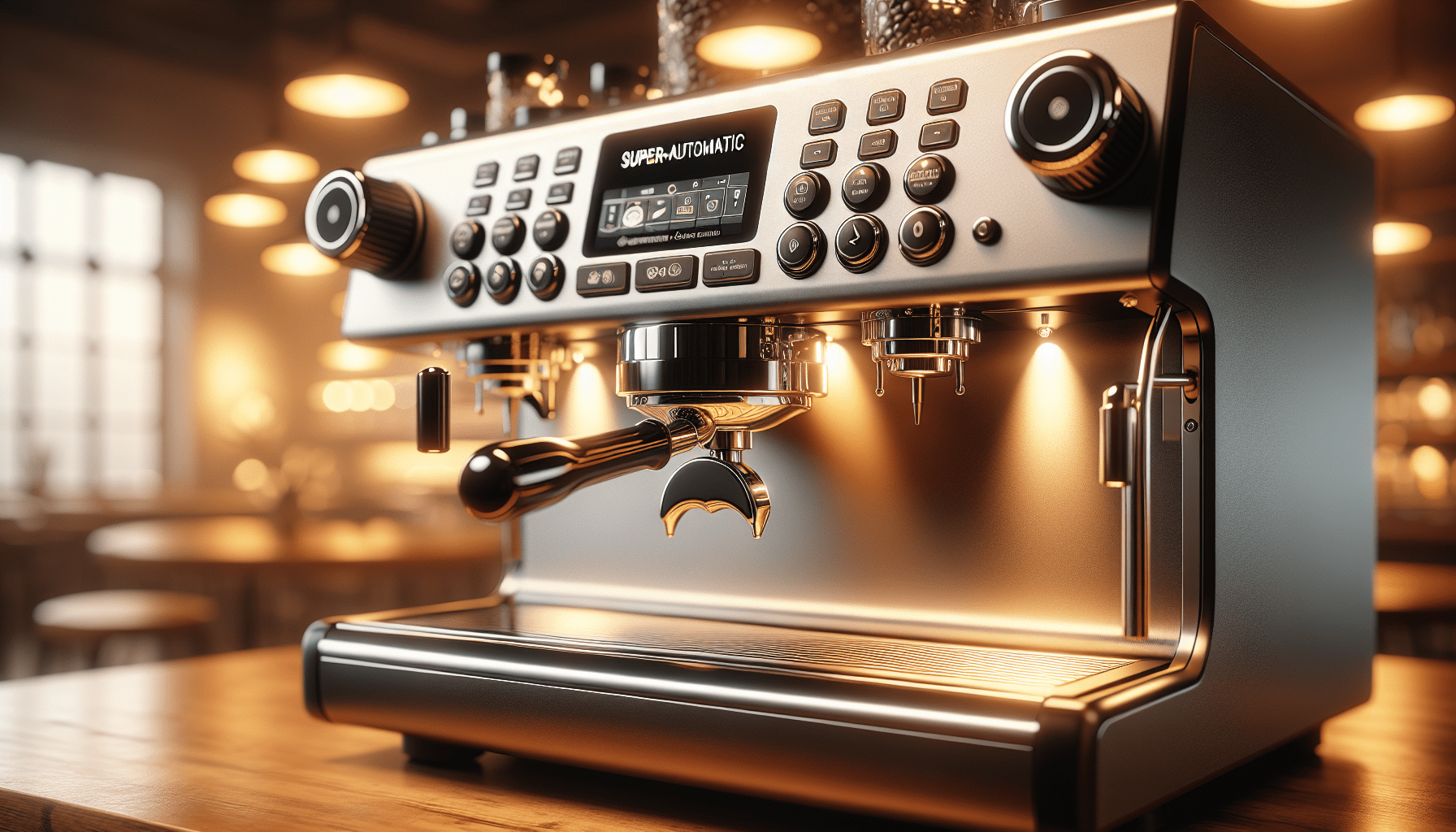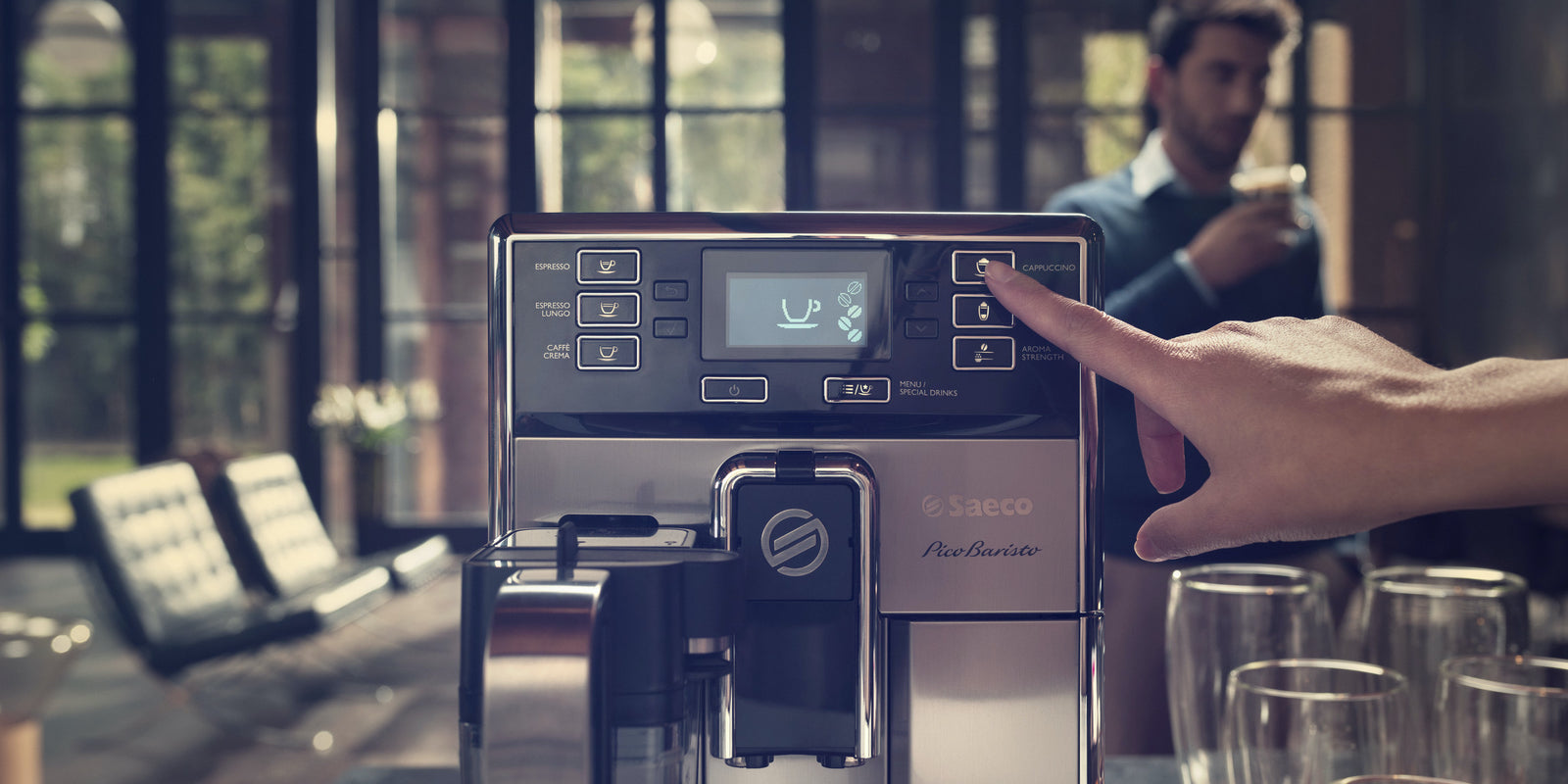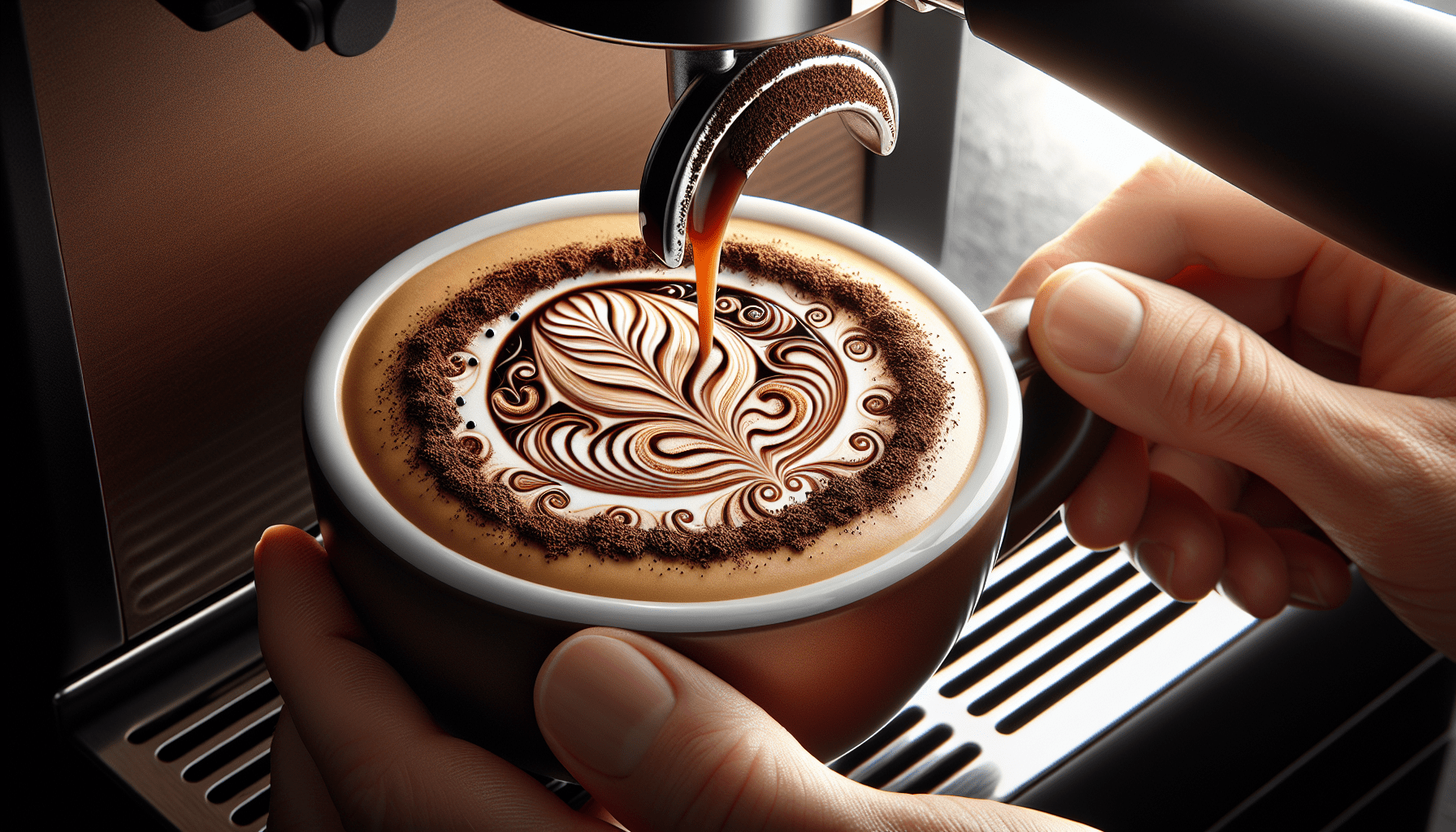Have you ever wondered if you could adjust the brewing parameters for different cup sizes of your super-automatic espresso machine? Well, the good news is that you can! Whether you prefer a small, medium, or large cup of espresso, these machines are designed to give you the flexibility to customize your brew according to your cup size. Gone are the days of being limited to a specific serving size – now you can enjoy your favorite espresso in any cup of your choice. Let’s explore how you can make the most out of your super-automatic espresso machine by adjusting the brewing parameters for different cup sizes.
Understanding Super-automatic Espresso Machines
What is a super-automatic espresso machine?
A super-automatic espresso machine is a special type of coffee maker that is designed to automate the entire espresso-making process. Unlike traditional espresso machines, which require manual grinding, tamping, and brewing, super-automatic machines handle all of these tasks automatically. With just a push of a button, you can have a freshly brewed cup of espresso in a matter of seconds. These machines are perfect for those who value convenience and consistency in their morning coffee routine.
How does a super-automatic espresso machine work?
Super-automatic espresso machines incorporate advanced technology to streamline the espresso-making process. They have built-in grinders that grind the coffee beans to the desired consistency, ensuring a fresh and flavorful cup of espresso. The ground coffee is then automatically transferred to the brewing chamber, where hot water of controlled temperature and pressure is forced through the coffee grounds. This process extracts the flavors and oils from the coffee, resulting in a rich and aromatic espresso. Finally, the machine will automatically dispense the brewed espresso into your cup, ready to be enjoyed.
Benefits of using a super-automatic espresso machine
There are several benefits to using a super-automatic espresso machine. Firstly, it offers unmatched convenience. With just a few button presses, you can have a delicious espresso ready to go. This is especially ideal for busy mornings or when you have guests over. Additionally, super-automatic machines eliminate the need for manual grinding and tamping, saving you time and effort. They also ensure consistency in the brewing process, as they are programmed with precise measurements for each cup. This means you can expect the same great taste every time. Lastly, these machines often come with customizable settings that allow you to adjust brewing parameters to suit your preferences, such as temperature and strength.
Brewing Parameters in Super-automatic Espresso Machines
What are brewing parameters?
Brewing parameters refer to the various factors that influence the taste and quality of the espresso. These include the grind size, brewing time, water volume, and water temperature. Each of these parameters plays a vital role in determining the overall flavor profile of the espresso. By adjusting these parameters, you can customize your espresso to suit your taste preferences and achieve the perfect balance of flavors.
Common brewing parameters in super-automatic espresso machines
Super-automatic espresso machines typically offer a range of customizable brewing parameters to cater to individual preferences. The grind size is one of the most important parameters, as it determines the extraction rate of the coffee and affects the overall flavor. Coarser grinds result in a faster extraction, producing a milder espresso, while finer grinds produce a slower extraction, yielding a stronger and more intense flavor.
The brewing time is another crucial parameter that affects the strength and intensity of the espresso. Longer brewing times will typically result in a stronger and more concentrated espresso, while shorter brewing times will produce a milder cup. Water volume determines the amount of liquid in each shot, with larger volumes resulting in a more diluted espresso. Lastly, water temperature greatly influences the extraction process and affects the overall flavor profile. Higher temperatures can extract more flavors and produce a bolder cup, while lower temperatures may result in a smoother and milder espresso.
Importance of adjusting brewing parameters
Adjusting brewing parameters is essential to achieve the perfect balance of flavors in your espresso. By fine-tuning the grind size, brewing time, water volume, and water temperature, you can tailor your espresso to your personal taste preferences. Whether you prefer a strong and bold cup or a milder and smoother one, making small adjustments to these parameters allows you to achieve your desired flavor profile. It is through these adjustments that you can truly customize your espresso experience and create the perfect cup every time.
Different Cup Sizes and Brewing Parameters
Effect of cup size on brewing parameters
The cup size you choose to brew your espresso into can have a significant impact on the brewing parameters. Different cup sizes require different amounts of coffee grounds, water volume, and brewing time to achieve optimal results. When brewing into a smaller cup, it is important to use less water and adjust the grind size accordingly. This ensures that the extraction is not overly diluted and maintains the right balance of flavors. Conversely, when brewing into a larger cup, you may need to increase the water volume and adjust the grind size to achieve a well-balanced and flavorful cup.
Adjusting brewing parameters for different cup sizes
To adjust the brewing parameters for different cup sizes, you will need to consider the specific requirements of each cup. If you are brewing into a smaller cup, start by reducing the water volume and adjusting the grind size to a finer setting. This will ensure that the flavors are concentrated and not diluted. For larger cups, increase the water volume and adjust the grind size to a coarser setting to maintain a balanced and flavorful cup. It may take some trial and error to find the perfect parameters for each cup size, but with practice, you will be able to consistently produce excellent results.
Factors to consider when adjusting brewing parameters
When adjusting brewing parameters for different cup sizes, it is important to consider factors such as the desired strength, extraction ratio, and concentration. For a stronger cup, you may need to increase the grind size slightly to slow down the extraction process. Conversely, if you prefer a milder cup, a finer grind size can be used to speed up the extraction. Additionally, the water volume should be adjusted to achieve the desired concentration. Experimentation and tasting are crucial in finding the optimal brewing parameters for each cup size, as personal preferences can vary greatly.
Determining Optimal Brewing Parameters
Experimentation and tasting
Determining the optimal brewing parameters for your desired espresso characteristics requires experimentation and tasting. Start by using the standard brewing parameters provided by the manufacturer and gradually make small adjustments to the grind size, brewing time, water volume, and water temperature. Each adjustment will have a unique impact on the flavor profile. Take note of the changes you make and taste the resulting espresso to evaluate the impact on the overall taste and strength. Through repeated experimentation and tasting, you will be able to refine the brewing parameters to suit your personal taste preferences.
Understanding the desired espresso characteristics
To determine the optimal brewing parameters, it is crucial to have a clear understanding of the desired espresso characteristics. Consider the flavor profile you prefer – whether you enjoy a bold and strong espresso or a milder and smoother cup. Also, take note of any specific flavors or notes you want to accentuate in your espresso, such as chocolate or fruity undertones. By identifying these characteristics, you can tailor your brewing parameters to enhance and highlight the desired flavors.
Refining brewing parameters
Refining the brewing parameters is an ongoing process that involves continuous adjustments and evaluations. As you experiment and taste different variations of your espresso, take note of the adjustments that yield the best results. Refine the parameters based on your taste preferences and continue to fine-tune until you achieve the desired flavor profile. Remember, the journey to finding the optimal brewing parameters is just as enjoyable as the end result, as it allows you to learn and discover new flavors along the way.
Overcoming Challenges in Adjusting Brewing Parameters
Machine limitations and options
It is important to understand the limitations of your super-automatic espresso machine when adjusting brewing parameters. Some machines may have specific limitations on grind size adjustment or water temperature control, which can affect the accuracy of parameter adjustments. It is crucial to familiarize yourself with the options and settings of your machine to ensure that you can make the necessary adjustments within its capabilities. If your machine has limited options, you may need to find alternative ways to achieve the desired adjustments, such as using pre-ground coffee or adjusting the water volume manually.
Understanding the machine’s programming
Super-automatic espresso machines are often equipped with programmed brewing profiles that are optimized for specific cup sizes. Understanding the machine’s programming and how it affects the brewing parameters is essential in making accurate adjustments. Familiarize yourself with the pre-set profiles and evaluate how they align with your taste preferences. If necessary, consult the machine’s user manual or contact the manufacturer for guidance on adjusting the programming to suit your specific needs. By understanding and utilizing the machine’s programming effectively, you can overcome challenges in adjusting brewing parameters and achieve consistent and satisfying results.
Finding a balance between taste and consistency
When adjusting brewing parameters, it is important to find a balance between taste and consistency. While it may be tempting to make drastic changes to achieve a specific flavor profile, it is equally important to maintain consistency in your espresso. Remember that small adjustments can have significant impacts on the taste, so approach parameter adjustments with caution. Continuously evaluate the taste and strength of your espresso and make gradual adjustments to strike the perfect balance between taste preferences and consistency. This ensures that you can consistently enjoy your preferred flavor profile without sacrificing the overall quality of your espresso.
Tips for Adjusting Brewing Parameters
Start with standard parameters
When adjusting brewing parameters, it is advisable to start with the standard parameters recommended by the manufacturer. These parameters have been carefully calibrated to produce a balanced and flavorful espresso. By starting with the standard settings, you can familiarize yourself with the machine’s capabilities and understand its baseline performance. From there, you can make gradual adjustments to tailor the parameters to your personal taste preferences.
Keep track of adjustments
Keeping track of the adjustments you make is crucial in refining your brewing parameters. Record the specific changes you make to the grind size, brewing time, water volume, and water temperature, along with the resulting taste and strength of the espresso. This allows you to identify patterns and trends in the adjustments and understand how they impact the overall flavor profile. By maintaining detailed records, you can make informed decisions when fine-tuning your brewing parameters and ensure consistent results.
Taste testing and feedback
Regular taste testing is essential in the process of adjusting brewing parameters. Take the time to evaluate the flavor, aroma, and overall quality of each cup of espresso you brew. Pay attention to any deviations from your desired taste preferences and make adjustments accordingly. Additionally, seek feedback from others who enjoy espresso to gain different perspectives and insights. Their input can help you identify areas for improvement and guide you in the process of fine-tuning your brewing parameters. Remember, adjusting brewing parameters is a subjective and iterative process, and feedback can be invaluable in achieving the best possible results.
Common Adjustments for Different Cup Sizes
Grind size
One of the primary adjustments to consider when brewing different cup sizes is the grind size. Finer grinds are generally suitable for smaller cups, as they allow for a slower extraction process and a stronger flavor. Alternatively, coarser grinds are typically used for larger cups, as they facilitate a faster extraction and a milder flavor. Experiment with adjusting the grind size incrementally to find the optimal setting for each cup size, taking into account the desired strength and intensity of the espresso.
Brewing time
The brewing time is another crucial parameter that can be adjusted for different cup sizes. Longer brewing times generally result in a more concentrated and stronger cup of espresso, which is suitable for smaller cups. Conversely, shorter brewing times are preferable for larger cups, as they produce a milder and less concentrated espresso. Adjust the brewing time by making incremental changes and assess the impact on the taste and strength of the espresso.
Water volume
The water volume is directly correlated to the cup size and should be adjusted accordingly. Smaller cups require less water volume to ensure proper extraction and flavor concentration. Conversely, larger cups will need more water to maintain a balanced and flavorful cup. When adjusting the water volume, consider the desired concentration and strength of the espresso. Gradually make adjustments to find the optimal water volume for each cup size, taking note of the resulting taste and strength.
Water temperature
Water temperature is a critical brewing parameter as it influences the extraction process and flavor profile. Adjusting the water temperature can help compensate for the different cup sizes and achieve the desired flavor balance. For smaller cups, a slightly higher water temperature can enhance the extraction and produce a stronger espresso. On the other hand, for larger cups, a slightly lower water temperature can prevent over-extraction and yield a milder cup. Experiment with adjusting the water temperature within a reasonable range to find the optimal setting for each cup size.
Impact of Cup Size on Espresso Extraction
Extraction ratios and flavors
The cup size has a direct impact on the extraction ratio, which refers to the ratio of coffee grounds to water. Smaller cups require a higher extraction ratio to achieve a stronger and more concentrated espresso. This is because the smaller amount of water needs to extract a sufficient amount of flavor from the coffee grounds. In contrast, larger cups have a lower extraction ratio, resulting in a milder and less concentrated flavor. Understanding the impact of cup size on extraction ratios allows you to adjust the brewing parameters accordingly and achieve the desired flavor profile.
Concentration and strength
The cup size also affects the concentration and strength of the espresso. Smaller cups, with their higher extraction ratios, produce a more concentrated and intense flavor. This is preferred by those who enjoy a strong and bold espresso. On the other hand, larger cups result in a milder and less concentrated flavor. This can be appreciated by those who prefer a smoother and more nuanced espresso. By understanding the impact of cup size on concentration and strength, you can adjust the brewing parameters to achieve the desired taste profile.
Crema formation
Crema, the creamy and rich layer that sits atop a well-brewed espresso, is impacted by the cup size. Smaller cups generally result in a thicker and more pronounced crema due to the higher extraction ratio. The higher concentration of coffee oils and compounds contributes to the formation of a velvety crema layer. Conversely, larger cups may have a thinner crema due to the lower extraction ratio. By adjusting the brewing parameters for each cup size, you can influence crema formation and enjoy the visual and aromatic delight it adds to your espresso.
Special Considerations for Specialty Coffees
Single-origin and unique flavors
Specialty coffees, particularly single-origin beans, often possess unique and distinct flavor profiles. These coffees showcase the specific characteristics of a particular region or farm, such as fruity or floral notes. When brewing specialty coffees in a super-automatic espresso machine, it is important to adjust the brewing parameters accordingly to highlight these flavors. Experiment with different grind sizes, brewing times, and water volumes to bring out the best in each specialty coffee and fully appreciate its exceptional qualities.
Roast profiles and their impact
The roast profile of the coffee beans also plays a significant role in determining the optimal brewing parameters. Lighter roast profiles tend to have more vibrant and delicate flavors, requiring careful adjustments to the brewing parameters to achieve a balanced and flavorful cup. On the other hand, darker roast profiles have bolder and richer flavors, which can withstand slightly different brewing parameters. Adjust the grind size, brewing time, and water volume to suit the specific roast profile and unleash its full potential.
Adapting brewing parameters for different beans
Each variety of coffee beans has its unique characteristics and flavors. When using different types of beans in a super-automatic espresso machine, it is important to adapt the brewing parameters accordingly. Experiment with the grind size, brewing time, water volume, and water temperature to find the optimal combination for each type of bean. Pay attention to the specific flavors and nuances of each coffee and adjust the parameters to achieve the desired taste profile. Adapting the brewing parameters to different beans allows you to fully explore the range of flavors and enjoy a diverse and exciting espresso experience.
Conclusion
Super-automatic espresso machines offer incredible flexibility and customization when it comes to brewing parameters. By understanding the various factors that influence the taste and quality of the espresso, you can fine-tune the parameters to achieve your desired flavor profile. Whether you are adjusting the parameters for different cup sizes or exploring the unique characteristics of specialty coffees, continuous experimentation and testing are key. With each adjustment, evaluate the taste and strength of your espresso and make incremental changes to refine the brewing parameters. By doing so, you can create a truly personalized and enjoyable espresso experience, tailored to your cup size preferences and flavor preferences. Embrace the journey of exploration and discovery, and never stop experimenting to achieve optimal results in your super-automatic espresso machine. Cheers to the perfect cup of espresso!




